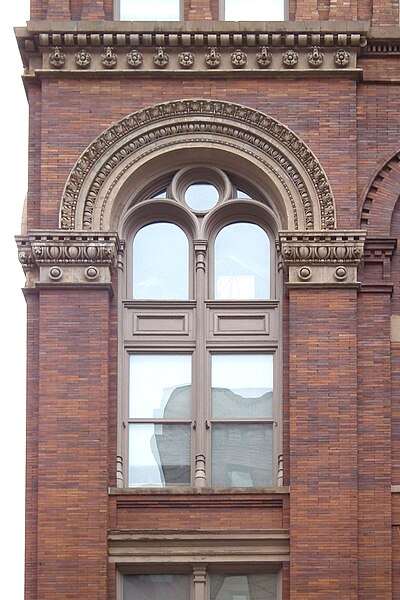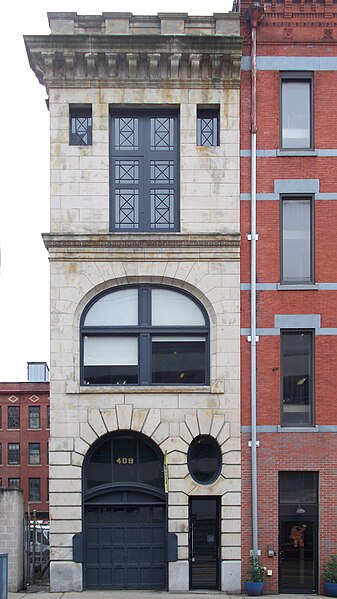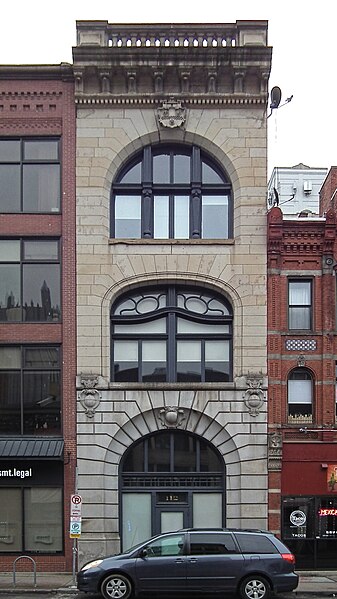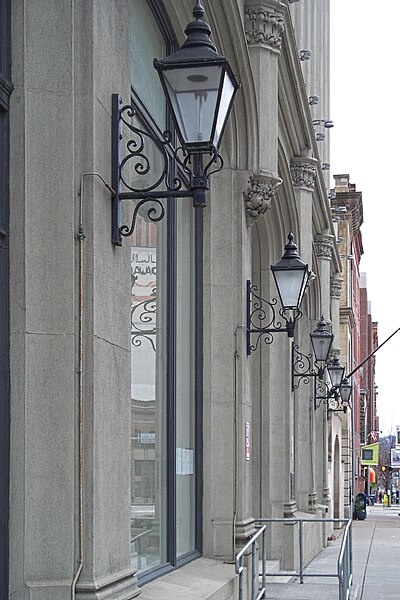
Thomas Pringle, architect of some of our prominent churches, designed this nine-storey Deco Gothic building for the Salvation Army almost as if it were a skyscraper church, complete with his usual corner tower. Today it is a hotel.



The Boulevard of the Allies side of one of the side-by-side Hartje Brothers buildings. Charles Bickel designed this building and the matching one behind it on Wood Street. This was the later of the two, both built in 1902 for the Hartje Brothers Paper Manufacturing Company. Mr. Bickel was extraordinarily prolific, but old Pa Pitt thinks he deserved his success. For an interesting comparison, look at the Reymer Brothers candy factory and the Concordia Club, and see how Charles Bickel created different effects from the same basic shapes.


Given an improbably narrow L-shaped lot to work with, Charles Bickel1 did not despair. Instead, he had fun drawing two quite different but obviously related fronts for the same firehouse. Above, the Boulevard of the Allies front; below, the Smithfield Street front.

The style is rich Renaissance with more than a hint of Art Nouveau. Bickel was probably the most prolific architect Pittsburgh ever had, but he did not fill the city with identical boxes. He dabbled in a surprising range of styles.

It never hurts to put your client’s coat of arms on the front of the building—in this case, the arms of the City of Pittsburgh.

The side of the building is exposed now along the Boulevard of the Allies, showing that it was not very deep, in addition to being very narrow. By 1923, according to old maps, the building was in private hands; the city had built a pair of engine houses half a block away that were probably more suitable for the new horseless fire engines.
Addendum: A city architectural survey dates this firehouse to about 1900 and attributes it to William Y. Brady. Brady was architect of Engine Company No. 1 down the street, which is in a much heavier style; Father Pitt’s evidence is all in favor of attributing this one to Mr. Bickel.

This feast of deco-Gothic terra cotta on the Boulevard of the Allies was designed by Joseph F. Kuntz, who worked for the Wm. G. Wilkins Company. It opened in 1925. Several of Kuntz’s buildings are notable for their terra-cotta fronts: see, for example, the Maul Building and the Hunt Armory.








